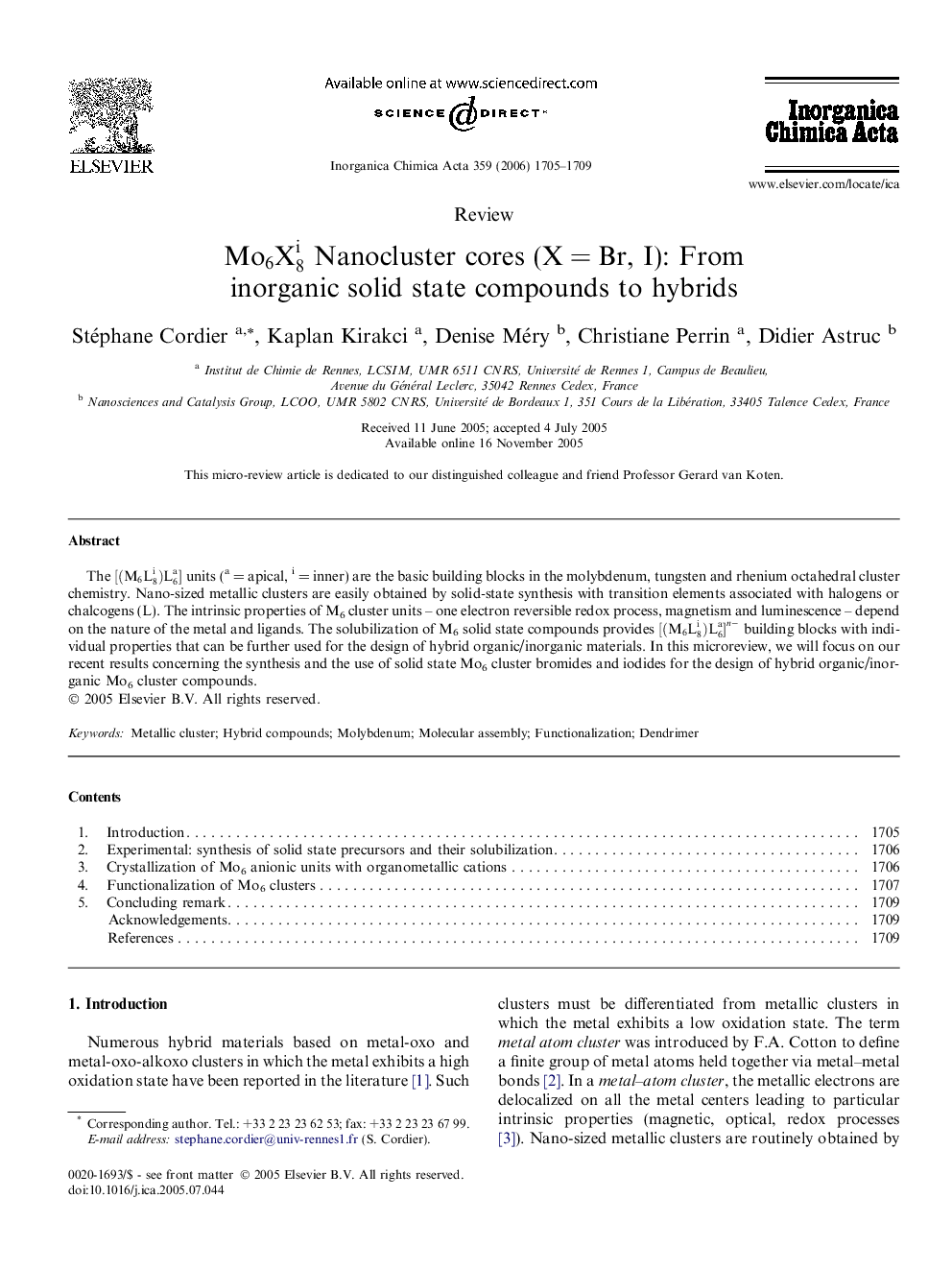| Article ID | Journal | Published Year | Pages | File Type |
|---|---|---|---|---|
| 1307790 | Inorganica Chimica Acta | 2006 | 5 Pages |
The [(M6L8i)L6a] units (a = apical, i = inner) are the basic building blocks in the molybdenum, tungsten and rhenium octahedral cluster chemistry. Nano-sized metallic clusters are easily obtained by solid-state synthesis with transition elements associated with halogens or chalcogens (L). The intrinsic properties of M6 cluster units – one electron reversible redox process, magnetism and luminescence – depend on the nature of the metal and ligands. The solubilization of M6 solid state compounds provides [(M6L8i)L6a]n- building blocks with individual properties that can be further used for the design of hybrid organic/inorganic materials. In this microreview, we will focus on our recent results concerning the synthesis and the use of solid state Mo6 cluster bromides and iodides for the design of hybrid organic/inorganic Mo6 cluster compounds.
Graphical abstractFunctionalization of the Mo6Br8i metallic cluster core with the tri-silylferrocenyl phenolate dendron p-HO–C6H4C{CH2CH2CH2Si(Me)2Fc}3 gives the Mo6-cluster-cored octadecyl-silylferrocenyl dendrimer that discloses a single CV wave in CH2Cl2 and recognizes the biologically important adenosyl triphosphate di-anion (ATP2−).Figure optionsDownload full-size imageDownload as PowerPoint slide
